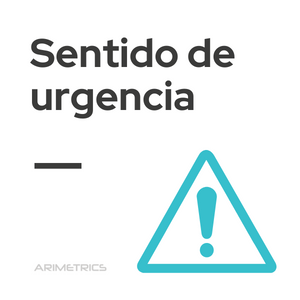 Definition:
Definition:
A sense of urgency is a feeling or attitude that a task must be accomplished quickly and with great intensity. This term often appears when organizations need to mobilize resources to address an urgent issue or complete a major project within a tight deadline. Having a sense of urgency can also help people and organizations prioritize tasks to achieve their desired outcomes faster.
Sense of urgency in the company
Sense of urgency is a valuable tool in the business environment, as it allows organizations and their members to focus their efforts on critical tasks and maximize their efficiency. Here are some of its most important applications:
- Prioritization of activities: In a dynamic work environment, establishing a sense of urgency helps identify which tasks require immediate attention. This ensures that resources are optimally allocated and critical tasks are completed on time, avoiding delays that could affect the organization’s overall performance.
- Rapid decision making: A well-managed sense of urgency allows leaders and teams to quickly evaluate available options. This is especially vital in industries where response time can determine the success or failure of an initiative. Quick decisions can be the difference between leading the market or falling behind.
- Team inspiration and motivation: Conveying a sense of urgency can inspire teams to work with greater commitment and energy. This not only increases productivity, but also fosters a spirit of collaboration and cohesion as everyone works toward a common goal with a clear, shared purpose.
- Improved operational efficiency: By setting clear deadlines, organizations can reduce downtime and minimize procrastination. A well-implemented sense of urgency helps maintain focus on core objectives, leading to greater operational efficiency and achieving results faster.
- Competitive advantage: Acting quickly and decisively can provide a significant advantage over competitors. In highly competitive markets, organizations that can act quickly and decisively often outperform their competitors. A sense of urgency allows companies to be more agile and adapt quickly to market changes.
The sense of urgency in marketing
In marketing, urgency is a key factor in the success of campaigns. It can:
- Motivate potential customers: Create the perception that they must act immediately to take advantage of an offer. This sense of urgency can be the final push customers need to make a purchase decision.
- Increase the effectiveness of limited-time offers: Incentivize more customers to make a purchase with limited-time offers. Offers with a specific duration can create a sense of scarcity that motivates customers to act quickly.
- Encourage subscriptions: Encourage customers to join mailing lists by offering exclusive content or discounts. By creating a sense of exclusivity and urgency, companies can increase their database of potential customers.
- Create attractive offers: Use urgency to design offers that motivate customers to act quickly. This can include special promotions, one-time discounts or limited edition products.
Examples of sense of urgency
There are multiple examples of how the sense of urgency is used in the marketplace:
- Limited-time discounts: Offers that expire quickly, such as a 20% discount for purchases in the next 24 hours. These offers force customers to make quick decisions in order not to miss the opportunity.
- Flash sales: Short promotions that encourage immediate purchases, such as a 3-hour sale with deep discounts. Flash sales are effective for clearing inventory quickly and driving traffic to the store.
- Early bird special promotions: Exclusive offers for the first to act, such as a 30% discount for the first 100 purchases of the day. This not only generates urgency, but also rewards the most loyal and quickest customers.
- Web countdown: A countdown widget that displays the time remaining to take advantage of an offer, increasing the pressure to act quickly. This constant display of the time remaining can be a powerful motivator.
- Limited stock: Indicate that there are only a few products available, which can accelerate customers’ purchasing decision. The perception of scarcity can be a strong incentive to purchase.
- Last minute deals: Discounts or promotions that are announced shortly before they expire, such as reduced fares for flights departing within 48 hours. These offers can capture the attention of bargain hunters and those looking for spontaneity.
- Exclusive events: Invite customers to a special event with limited capacity, creating urgency to register before the event sells out. Exclusive events can increase brand awareness and foster a more personal connection with customers.
